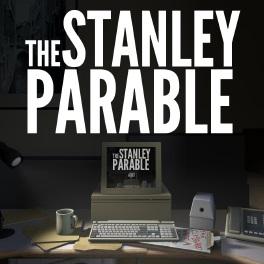
I played the Stanley Parable. In this game, walking tells a story by giving the player freedom of choice with which direction to walk and what choices to make – or to not walk at all. Each choice the player makes is permanent and irreversible. Even in scenarios where the player decides to start again, the choices they made originally have an irreversible impact on the story. As such, the types of fun are narrative and expression. The player expresses themselves through the choices they make – thereby dictating the path of the story.
Through walking and the voice of a narrator, a meta-story is told about what the story should even be about. Based on the paths you take different narrative threads emerge. The fun of this game for me comes from trying to make sense of the narrative and trying to solve the puzzle of what triggers certain narrative events and trying to trace back the narrative paths that lead me to a particular scenario.
Most players will never experience this game in its entirety because everyone will get unique story sequences and “endings” based on the choices they make. Some events only occur in very specific scenarios. For example, there is a room with a jpg of a baby and a fire. The narrator has you continuously press a button for four hours to win the game and save the baby. The obvious action is to give up and continue with the story, but there were actual narrative events that changed the outcome of the story for players who decided to either automate or manually click the button for four hours. This is just one example of how every player will have a completely unique experience with this game and story told simply based on walking and light actions.


